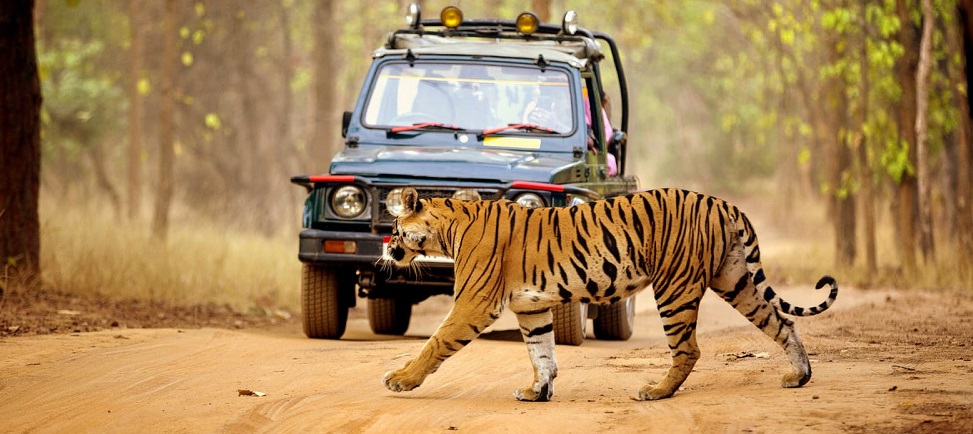Choosing the Perfect Season: Best Time to Visit Valmiki Tiger Reserve

Valmiki Tiger Reserve, nestled in the Himalayan foothills of Bihar, India, is a sanctuary for wildlife enthusiasts and nature lovers. The reserve offers a unique blend of lush forests, diverse flora and fauna, and a rich cultural heritage. To make the most of your visit to this pristine wilderness, it's essential to choose the right time of year. In this blog post, we will explore the best times to visit Valmiki Tiger Reserve to maximize your wildlife encounters and overall experience.
Winter (November to February)
Winter is considered the best time to visit Valmiki Tiger Reserve for several compelling reasons:
Pleasant Weather: The winter months in Valmiki are characterized by mild temperatures, with daytime temperatures ranging from 10°C to 20°C (50°F to 68°F). The nights can get cooler, but overall, it's a comfortable and enjoyable climate for outdoor activities.
Wildlife Sightings: During the winter season, wildlife sightings are at their peak. The dry vegetation and reduced foliage make it easier to spot animals as they gather around water sources. Bengal tigers, leopards, and various deer species are commonly seen during this time.
Birdwatching: Valmiki Tiger Reserve is a haven for birdwatchers, and winter brings an abundance of migratory birds to the region. You can spot various species of waterfowl, eagles, and other migratory birds around the reserve's lakes and wetlands.
Clear Skies: The clear skies during winter offer excellent visibility for wildlife safaris and photography. The lush green landscapes, coupled with the blue skies, provide a stunning backdrop for capturing the natural beauty of the reserve.
Cultural Festivals: Winter coincides with various cultural festivals in the region. The Ram Navami fair in Chuharwari, for example, is a vibrant celebration that showcases the local culture and traditions, offering visitors a unique cultural experience.
Spring (March to May)
Spring is another favorable time to visit Valmiki Tiger Reserve, with its own set of advantages:
Moderate Weather: Spring brings gradually rising temperatures, making it a pleasant time to explore the reserve. Daytime temperatures typically range from 20°C to 30°C (68°F to 86°F).
Floral Blooms: The forest comes to life with vibrant blossoms and lush greenery during spring. The landscape is adorned with colorful flowers, creating a picturesque setting for nature enthusiasts.
Bird Migration: While winter sees the arrival of migratory birds, spring marks their departure. Birdwatchers can witness various species preparing for their long journey back to their breeding grounds.
Ideal for Hiking: The moderate weather conditions make spring an excellent time for trekking and hiking in the surrounding hills. The trails are less challenging than during the monsoon season, and the views are breathtaking.
Cultural and Religious Festivals: Spring is also the time for various local festivals, including Holi and Chaitra Navratri. These festivals offer a glimpse into the vibrant culture and traditions of the region.
Monsoon (June to September)
While monsoon brings a lush, rejuvenated landscape to Valmiki Tiger Reserve, it's important to consider the following factors before planning a visit during this season:
Lush Greenery: Monsoon transforms the reserve into a lush green paradise. The forests come alive with dense vegetation, and the water bodies are replenished, providing a beautiful backdrop for nature enthusiasts and photographers.
Challenging Terrain: The heavy rainfall can make the trails and roads within the reserve challenging to navigate. Wildlife sightings may be less frequent as animals seek shelter from the rain.
Limited Safaris: Due to safety concerns, the Forest Department may limit or suspend safaris during heavy rainfall. It's advisable to check with the authorities for the latest updates before planning a monsoon visit.
Reduced Tourist Crowds: If you prefer a quieter and more secluded experience, the monsoon season sees fewer tourists, allowing you to enjoy the reserve's tranquility.
Conclusion
Valmiki Tiger Reserve offers a unique experience throughout the year, each season showcasing its distinct charm. The best time to visit largely depends on your preferences, whether you prioritize wildlife sightings, pleasant weather, lush landscapes, or cultural experiences. Consider your interests and plan your trip accordingly, keeping in mind the unique offerings of each season in this pristine wilderness.